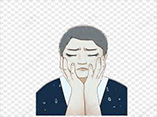Safety of Electro-Convulsive Therapy in Combination with Duloxetine in Treatment-resistant Depressive Patients: A Randomized Clinical Trial
DOI:
https://doi.org/10.31661/gmj.v11i.2408Keywords:
Depressive Disorder, Duloxetine, Electro-convulsive Therapy, Sertraline, CardiotoxicityAbstract
Background: There are several strategies in the management of treatment-resistant depression (TRD), including the administration of other antidepressants, augmentation therapy, electro-convulsive therapy (ECT), and a combination of ECT and antidepressants. The safety of ECT combined with any medication must be confirmed. The aim of this study was to assess the safety of duloxetine and ECT combination therapy. Materials and Methods: In this randomized clinical trial, the probable side effects of ECT plus duloxetine were compared with ECT plus sertraline in two groups of admitted TRD patients. Patients with general medical diseases and/or any contraindications to ECT or any of the two drugs were excluded. General side effects, including nausea, vomiting, and headache reported by patients (hours after ECT) as well as cardiotoxicity by electrocardiogram (immediately after any ECT episode), cognitive status by mini-mental state examination (MMSE, one month after the last ECT), and seizure duration were recorded for each patient. Results: No significant differences were observed in nausea, vomiting, headache, and myalgia between ECT+duloxetine and ECT+sertraline groups. Heart rate, QTc interval, ST-T change, and the incidence of arrhythmia were the same between the two arms of the study. Also, no prolonged seizures and status epilepticus were recorded among the studied patients. The MMSE revealed no marked differences in the cognitive status among patients of the two groups. Conclusion: ECT+duloxetine and ECT+sertraline were equally safe in patients with TRD.
References
Wijeratne C, Sachdev P. Treatment-resistant depression: critique of current approaches. Aust N Z J Psychiatry. 2008;42(9):751-62.
https://doi.org/10.1080/00048670802277206
PMid:18696279
Fava M, Davidson KG. Definition and epidemiology of treatment-resistant depression. Psychiatr Clin North Am. 1996;19(2):179-200.
https://doi.org/10.1016/S0193-953X(05)70283-5
PMid:8827185
McIntyre RS, Filteau M-J, Martin L, Patry S, Carvalho A, Cha DS, et al. Treatment-resistant depression: definitions, review of the evidence, and algorithmic approach. J Affect Disord. 2014;156:1-7.
https://doi.org/10.1016/j.jad.2013.10.043
PMid:24314926
Kraus C, Kadriu B, Lanzenberger R, Zarate CA Jr, Kasper S. Prognosis and improved outcomes in major depression: a review. Transl Psychiatry. 2019;9(1):127.
https://doi.org/10.1038/s41398-019-0460-3
PMid:30944309 PMCid:PMC6447556
The U. Efficacy and safety of electro-convulsive therapy in depressive disorders: a systematic review and meta-analysis. The Lancet. 2003;361(9360):799-808.
https://doi.org/10.1016/S0140-6736(03)12705-5
PMid:12642045
Bewernick B, Schlaepfer TE. Update on neuromodulation for treatment-resistant depression. F1000Res. 2015;4:F1000.
https://doi.org/10.12688/f1000research.6633.1
PMid:26918135 PMCid:PMC4754006
Pitchot W, Scantamburlo G, Ansseau M. Duloxetine in major depressed patients resistant to SSRIs and/or venlafaxine. Psychiatr Danub. 2010;22(Suppl 1):S106-7.
https://doi.org/10.1016/j.eurpsy.2007.01.810
Fang Y, Yuan C, Xu Y, Chen J, Wu Z, Cao L, et al. Comparisons of the efficacy and tolerability of extended-release venlafaxine, mirtazapine, and paroxetine in treatment-resistant depression: a double-blind, randomized pilot study in a Chinese population. J Clin Psychopharmacol. 2010;30(4):357-64.
https://doi.org/10.1097/JCP.0b013e3181e7784f
PMid:20571433
Dilbaz N, Sengül C, Okay T, Bayam G, Türkoglu A. The combined treatment of venlafaxine and ECT in treatment-resistant depressive patients. Int J Psychiatry Clin Pract. 2005;9(1):55-9.
https://doi.org/10.1080/13651500510018202
PMid:24945339
Gonzalez-Pinto A, Gutierrez M, Gonzalez N, Elizagarate E, Perez de Heredia JL, Mico JA. Efficacy and safety of venlafaxine-ECT combination in treatment-resistant depression. J Neuropsychiatry Clin Neurosci. 2002;14(2):206-9.
https://doi.org/10.1176/jnp.14.2.206
PMid:11983797
Eraslan D, Genc Y, Odabasioglu G, Ergun BM, Ozturk O. Safety of electroconvulsive therapy-duloxetine combination. J ECT. 2011;27(3):e51-2.
https://doi.org/10.1097/YCT.0b013e318212eca2
PMid:21865952
Eghbal B, Hekmat AS, Kouhpayeh SA, Ghanbariasad A, Javanmardi K, Samimi N, et al. Evaluating the Safety of Electroiconvulsive Shock and Duloxetine Combination Therapy on Behavioral, Cardiovascular, and Brain Oxidative Stress Markers in the Mice. GMJ. 2021;10:e2218.
https://doi.org/10.31661/gmj.v10i0.2218
Yildiz A, Mantar A, Simsek S, Onur E, Gökmen N, Fidaner H. Combination of pharmacotherapy with electro-convulsive therapy in prevention of depressive relapse: a pilot controlled trial. J ECT. 2010;26(2):104-10.
https://doi.org/10.1097/YCT.0b013e3181c189f7
PMid:19935091
Rasmussen KG. Propofol for ECT anesthesia a review of the literature. J ECT. 2014;30(3):210-5.
https://doi.org/10.1097/YCT.0000000000000093
PMid:24820943
Kadiyala PK, Kadiyala LD. Anaesthesia for electroconvulsive therapy: An overview with an update on its role in potentiating electroconvulsive therapy. Indian J Anaesth. 2017;61(5):373-380.
https://doi.org/10.4103/ija.IJA_132_17
PMid:28584345 PMCid:PMC5444214
Prudic J, Duan Y. Comprehensve Textbook of Psychiatry. tenth ed. Philadelphia: LWW; 2017. p. 45.
Finney GR, Minagar A, Heilman KM. Assessment of Mental Status. Neurol Clin. 2016;34(1):1-16.
https://doi.org/10.1016/j.ncl.2015.08.001
PMid:26613992
SBU. Treatment of Depression: A Systematic Review [Internet]. Stockholm: Swedish Council on Health Technology Assessment (SBU); 2004.
Lunn MP, Hughes RA, Wiffen PJ. Duloxetine for treating painful neuropathy, chronic pain or fibromyalgia. Cochrane Database Syst Rev. 2014;(1):CD007115.
https://doi.org/10.1002/14651858.CD007115.pub3
PMCid:PMC6485608
Song G-M, Tian X, Shuai T, Yi L-J, Zeng Z, Liu S, et al. treatment of adults with treatment-resistant depression: electro-convulsive therapy plus antidepressant or electro-convulsive therapy alone? Evidence from an indirect comparison meta-analysis. Medicine (Baltimore). 2015;94(26):e1052.
https://doi.org/10.1097/MD.0000000000001052
PMid:26131818 PMCid:PMC4504538
Merk W, Kucia K. ÅÄ…czne stosowanie zabiegów EW i leków psychotropowych. Psychiatr Pol. 2015;49(6):1241-53.
https://doi.org/10.12740/PP/37462
PMid:26909399
Heinz B, Lorenzo P, Markus R, Holger H, Beatrix R, Erich S, et al. Postictal ventricular tachycardia after electro-convulsive therapy treatment associated with a lithium-duloxetine combination. J ECT. 2013;29(3):e33-5.
https://doi.org/10.1097/YCT.0b013e31828b34c6
PMid:23670028
Lisanby SH, McClintock SM, McCall WV, Knapp RG, Cullum CM, Mueller M, et al. Longitudinal Neurocognitive Effects of Combined Electroconvulsive Therapy (ECT) and Pharmacotherapy in Major Depressive Disorder in Older Adults: Phase 2 of the PRIDE Study. Am J Geriatr Psychiatry. 2022;30(1):15-28.
https://doi.org/10.1016/j.jagp.2021.04.006
PMid:34074611
Sackeim HA, Dillingham EM, Prudic J, Cooper T, McCall WV, Rosenquist P, et al. Effect of concomitant pharmacotherapy on electro-convulsive therapy outcomes: short-term efficacy and adverse effects. Arch Gen Psychiatry. 2009;66(7):729-37.
https://doi.org/10.1001/archgenpsychiatry.2009.75
PMid:19581564
Omprakash TM, Chakrabarty AC, Surender P. Status epilepticus following electro-convulsive therapy. Indian J Psychol Med. 2013;35(1):96-7.
https://doi.org/10.4103/0253-7176.112218
PMid:23833352 PMCid:PMC3701370
Merk W, Kucia K. Combined use of ECT and psychotropic drugs. Psychiatr Pol. 2015;49(6):1241-53.
https://doi.org/10.12740/PP/37462
PMid:26909399
Hanretta AT, Malek-Ahmadi P. Combined use of ECT with duloxetine and olanzapine: a case report. J ECT. 2006;22(2):139-41.
https://doi.org/10.1097/00124509-200606000-00012
PMid:16801831

Published
How to Cite
Issue
Section
License
Copyright (c) 2022 Galen Medical Journal

This work is licensed under a Creative Commons Attribution 4.0 International License.







